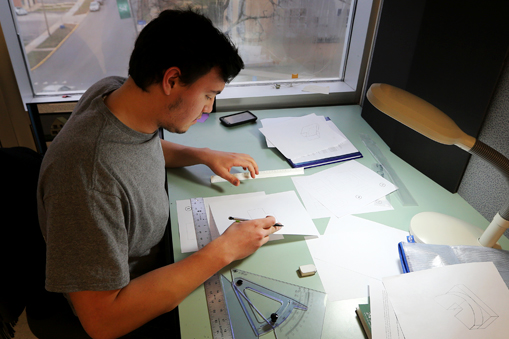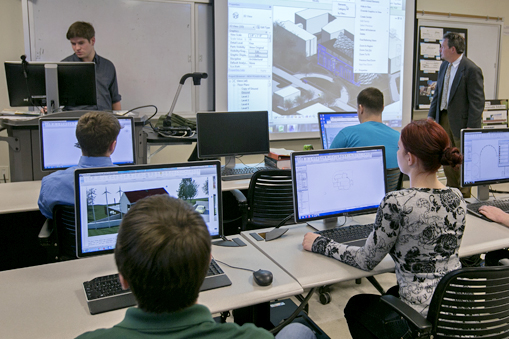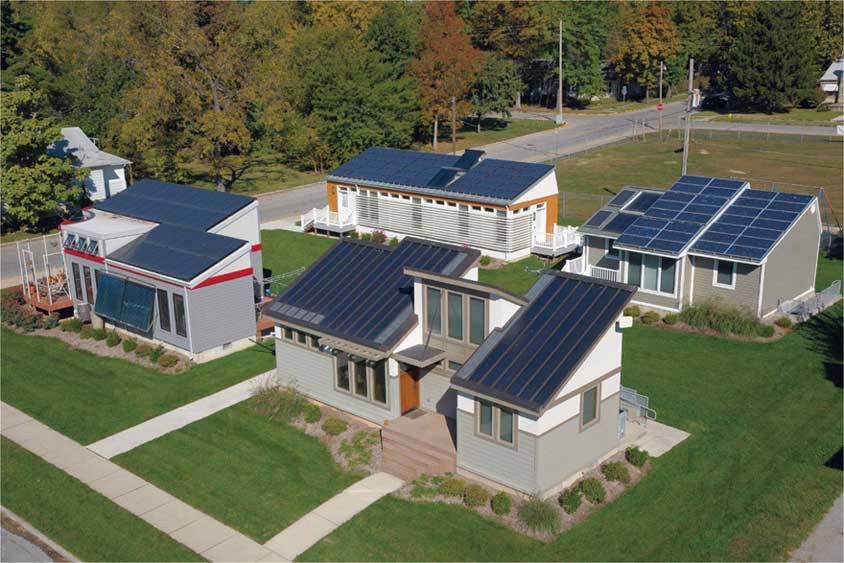Architectural Engineering
Architectural engineering research areas include energy and environmental design as it relates to green building systems, sustainable building design and interdisciplinary work. In addition to the Structural Engineering Lab, the six solar houses in the university’s solar and eco village provide a test bed for research on various sustainable building systems.
Meet the Experts
Interested in discussing the research we are working on or learning more? Please contact:
Stuart Baur
Assist. Chair and Assoc. Professor,
Architectural Engineering
(573) 341-7236 | baur@mst.edu |
329 Butler-Carlton Hall
John Myers
Professor, Structural Engineering
(573) 341-6618 | jmyers@mst.edu |
325 Butler-Carlton Hall
Facilities and labs

Design Studio Lab
The dedicated architectural engineering design studio has 28 drafting tables and four work tables for model construction. This room is utilized for two design courses, Architectural Design I and Architectural Design II. Both courses are taught in the spring and fall respectively. Through these resources you will not only learn various drawings, drafting and computer skills, but apply them in a presentation format that includes slide shows, posters and models.

Computer-Aided Design (CAD Studio) Lab
A second studio was added during the 2008-2009 academic year to provide students the opportunity to learn and study architectural and engineering design and drafting through different computer applications. This studio houses two large printers (one color and one black and white) along with 44 computers. The software includes Autodesk-based programs such as AutoCAD, Revit Architecture, Structures, MEP, Ecotech as well as other software providers including eQUEST, Sketch Up Pro and Visual Lighting Software.
Solar Villages

The Missouri S&T Solar House Design Team has designed and built numerous solar-powered homes for the U.S. Department of Energy’s Solar Decathlon competitions. These houses have been retained by the university and placed permanently on campus at two different locations. Since their placement, the solar homes serve as campus housing for Missouri S&T students, solar research facilities and an educational center for K-12, university students and the general public.
Using these homes for campus housing gives the students a unique opportunity to experience the benefits of alternative energy living. There is a considerable difference between discussing and researching alternative energy and then actually living in a solar-energy powered home. Both current and previous students have valued this opportunity and enjoyed learning more about “solar” living.
In addition to student housing, cutting-edge research continues in the area of energy performance, intelligible response systems and environmental protection. This is all in an effort to provide smart living!

Follow Civil, Architectural and Environmental Engineering